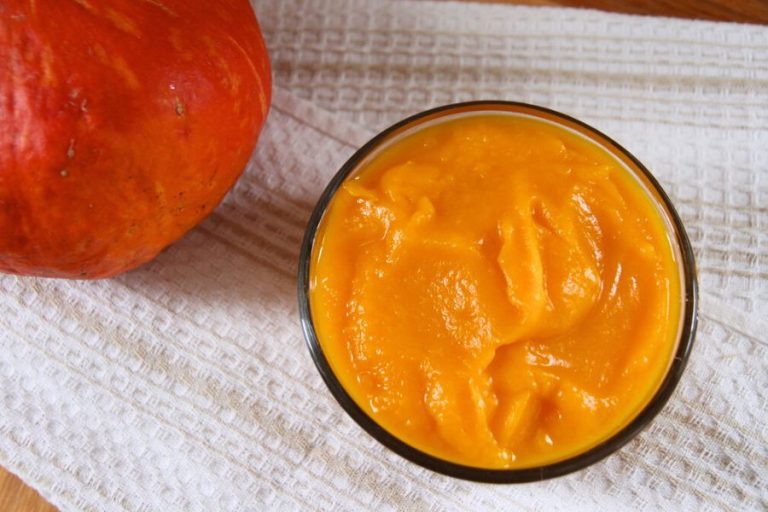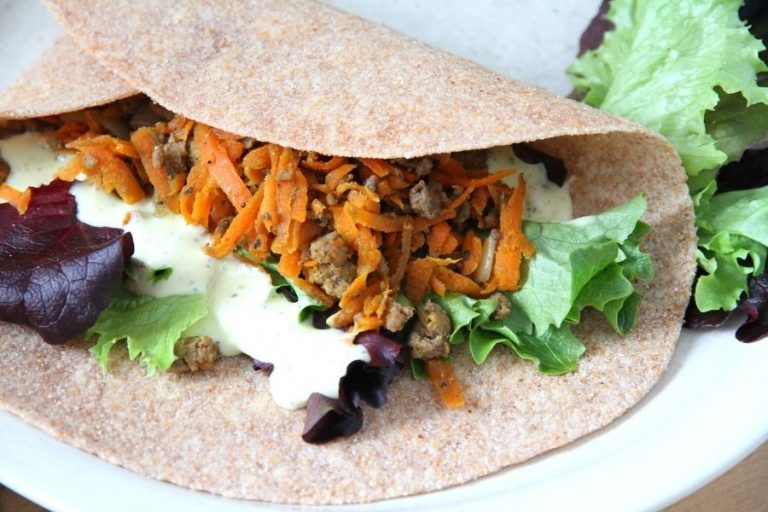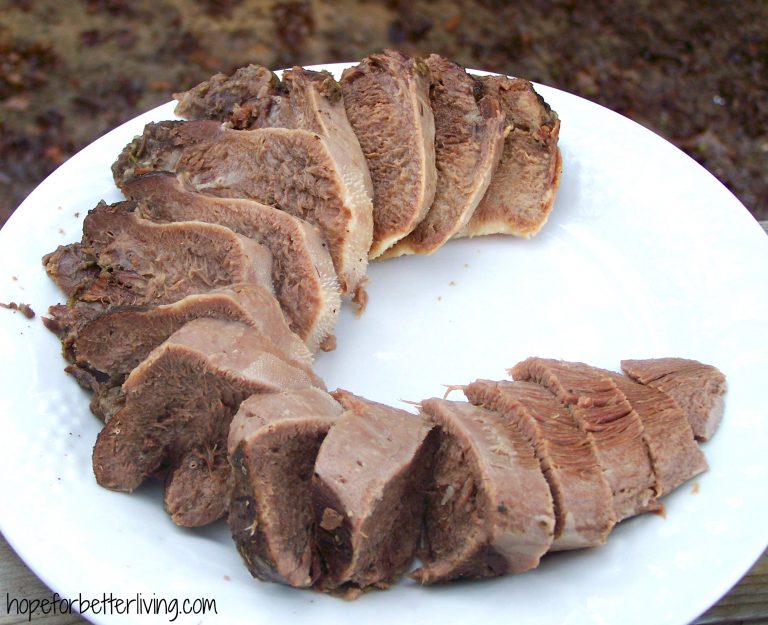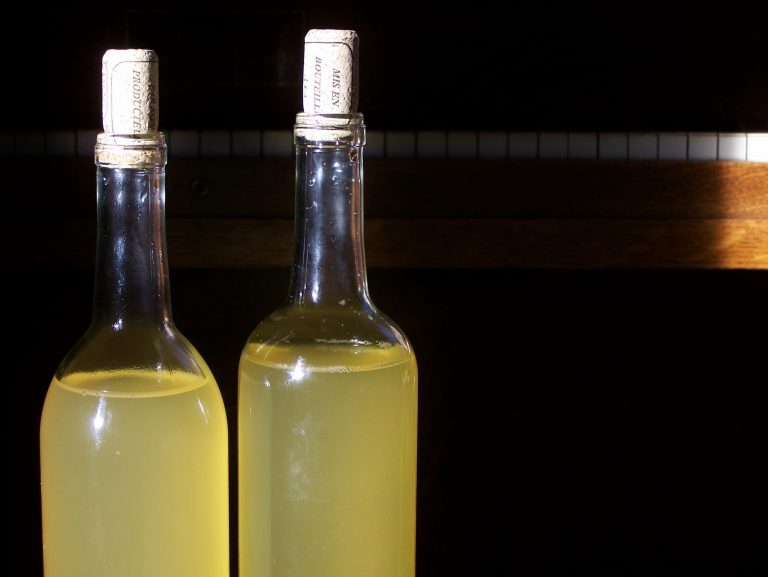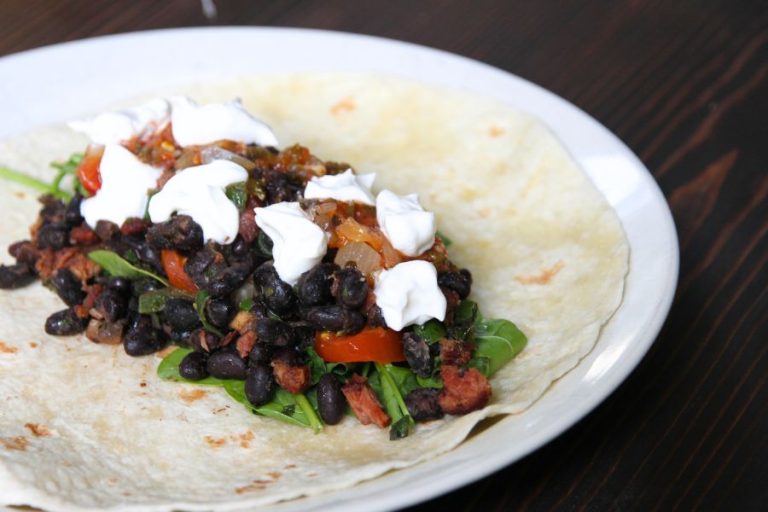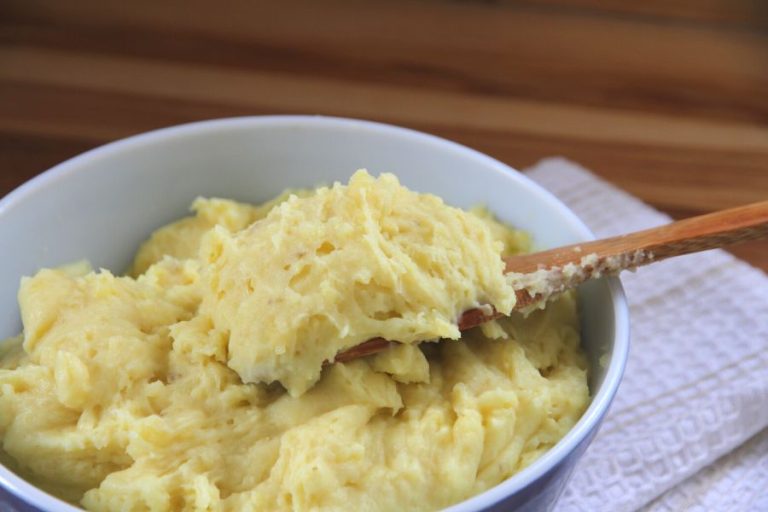How to Cook Beef Liver in a Cast Iron Skillet
Learn how to cook beef liver in a cast iron skillet, so you can enjoy tasty liver slices at the dinner table.

I grew up in a hunting and farming family, where we always had access to organ meat and specifically, fresh liver.
It didn't matter if we were butchering beef, elk or deer; raw liver was sliced up in the farmhouse kitchen by the cast iron sink, and fried in a large cast-iron skillet.
I don't remember being "forced" to eat liver. It was always part of our mealtimes, and I ate it with great enjoyment. To this day, I still have a special liking for the strong flavor and unique texture of liver.
And here in my traditional kitchen, I make sure it's part of my family's diet as well, so they develop a taste for it too.
Liver is a good thing to love, because it's rich in iron, plus other minerals and vitamins. Plus, it's one of the more readily available offal meats.
In this beef liver recipe, I give you one of my favorite ways to prepare this unique organ meat in a cast iron skillet. Because we all know cast iron is best for frying meat, right?
Best Type of Liver for Eating
Perhaps the most common source of liver for human consumption is beef (cow, bull or calf liver) and lamb.
But you can also eat the following:
- bison
- chicken liver
- duck liver
- turkey liver
- big game
- wild fowl
Here, I'm going to give you a very simple recipe for beef liver, and let you in on the secret to tender steaks!
Where to Source Quality Liver
The best place to get fresh liver is to remove it from the animal yourself! It doesn't get better than that.
But if this isn't possible, you can check with a local butcher, a local farm or potentially even find grass fed liver at the grocery store.

How to Prepare a Whole Liver
You always want to wash whole, fresh liver before cooking to remove the blood (liver is very bloody!). Otherwise you'll get a slightly metallic taste after cooking.
Whole beef liver has several lobes to it and is a substantial size. So it needs to be cut into 1/3 to 1/2 inch slices before cooking. Ideally, you would also cut out the connective tissues and blood vessels as well.
Flavors that Compliment Beef Liver
Liver has a unique taste, so the best thing to do is choose flavors that compliment your beef liver, instead of trying to mask it!
Here are some traditional favorites.
- fresh garlic
- onion slices
- shallots
- sea salt
- oregano
- thyme
Best Fats and Cooking Oil for Liver
Hands down, my favorite fat for cooking liver in a cast iron skillet is butter. Butter mellows out the liver flavor, in a complimentary sort of way.
But if you want other solid fats for your cast iron pan, you can use tallow or lard as well. Some folks like to use olive oil, but I don't like the pairing of olive and liver. If I must, I use avocado oil.
Things You'll Need for Cooking Liver
- cast iron skillet
- butter
- salt
- fresh minced garlic, shallots or onions (optional)
- mushrooms (optional)
Important Tips for Cooking Liver in Cast Iron
Tip 1
Liver is very lean, so don't skimp on the butter, fats or cooking oil when frying it up in your cast iron skillet.
Tip 2
Always preheat your cast iron skillet to medium heat and melt butter, so liver gently sizzles when it hits the pan. If your pan isn't preheated, liver will probably stick to the bottom of your skillet.

Tip 3
Always decrease the heat on your stove top after adding liver to the cast iron skillet. You don't want it to vigorously sizzle (as you do with a steak). Instead, aim for a gentle bubbling sound from the fats and oils.
Tip 4
With liver, I like to flip it often. After putting liver in the pan, wait until you just see brown creeping up the sides or through the vein holes in the meat.

After that, flip the meat and cook it 1-2 minute on the other side. Blood will rise to the surface and after 1 minute, and you'll want to flip it again.

Continue to flip it every minute, until blood no longer rises to the surface, and flesh only has a faint pink hue inside. Liver cooks much faster than steak, and most folks error on the side of overcooking it.
For more detailed instructions, see the printable recipe card at the end of this post!

Questions Folks Ask
What is the best way to cook beef liver in cast iron?
Slowly. If you flash fry your pieces of liver, they will be hard and tough. Slow pan frying is the way to go with beef liver.
Can you get rid of the bitter taste in liver?
The best way to avoid bitter flavor in liver is to source quality liver from quality animals. Make sure it has been well cleaned and blood has been removed from the veins and arteries. Cook it slow in quality fats.
Some folks claim soaking whole liver in a milk mixture or a salt water brine helps with the bitter blood taste. But I've never tried, because I do my own liver cleaning and don't have problems with bad taste.
What foods do you serve with liver?
You can't beat the strong liver flavor, so you might as well enjoy it! Go ahead and replace beef with liver in just about any recipe you have.
I would recommend using beef broth in recipes that require a gravy or sauce, instead of trying to make liver gravy with the pan drippings. Liver is lean and there won't be enough juices available.
How to Store Cooked Beef Liver
If you have leftovers, cooked liver pieces will keep about a week in the fridge in an airtight container or ziploc bag. I highly recommend warming leftovers in a large skillet before eating!

How to Cook Beef Liver in a Cast Iron Skillet
Equipment
- large Cast Iron Skillet
- a fork for flipping liver
Ingredients
- 2-3 Tablespoons butter
- 4 large slices of beef liver
- salt to taste
- optional herbs: oregano, rosemary or thyme
- optional alliums: onions, shallots or garlic
Instructions
- Measure butter (or oils) into your cast iron skillet.
- Turn burner on stove to medium heat, and pre-warm your cast iron skillet.
- If you want to use garlic, onions or shallots, prepare them now.
- When pan is hot, add slices of liver (they should gently sizzle or bubble), and any alliums you prepared.
- After adding liver, decrease the stove burner to medium-low (about a 3 on my electric stove).
- Liberally sprinkle the surface of your liver with salt.
- Cook liver for 1-2 minutes, until brown shows on the edges and creeps up through vein or artery holes.
- Use a fork to flip the liver and once again sprinkle with salt.
- Cook for about 1-2 minutes, until you see blood pooling on the surface.
- Flip liver again. Cook it for about 1 minute, before flipping again.
- Continue to flip liver every 1 minute as it cooks under low heat, until the blood no longer pools and the inside is a very faint pink (sometimes it's hard to get it perfect).
- Serve liver hot and enjoy!
